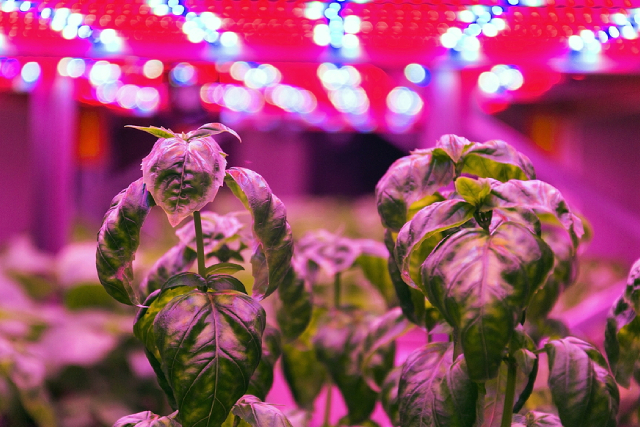
10 Feb How To Balance Light And Dark Cycles In Hydroponics
When it comes to hydroponics, people often focus on nutrients, water quality, and system design. While these are important, one crucial factor often overlooked is balancing light and dark cycles. These cycles play a vital role in ensuring crops grow healthily and produce better yields. Whether you’re growing leafy greens, herbs, or fruiting plants, the right balance between light and darkness can make all the difference.
Light and dark cycles affect how plants photosynthesise, grow, and rest. During the light phase, plants absorb light to produce energy, while the dark phase allows them to repair and store energy for growth. Without proper balance, plants may experience stress, stunted growth, or even fail to produce. By understanding the science behind these cycles, you can optimise your Singapore hydroponic system and maximise its efficiency.
Why light and dark cycles matter
- The role of light in plant growth
Plants depend on light to fuel photosynthesis, a process that converts light energy into the sugars they need for growth. The type, intensity, and duration of light exposure can directly influence how well your crops thrive. For hydroponics, artificial lighting like LED grow lights is often used to provide plants with the necessary spectrum of light. It’s important to mimic natural sunlight as much as possible, including offering red and blue light spectrums that promote both vegetative growth and flowering.
However, too much light can be harmful. Overexposing plants to light may lead to “light stress,” causing leaves to burn or energy to deplete faster than it can be replenished. This is why maintaining an adequate dark cycle is essential to give your plants a break and allow them to repair and grow.
- The importance of the dark cycle
Dark cycles are just as critical as light cycles in hydroponic systems. While photosynthesis ceases during the dark phase, plants continue to respire, consuming the energy they stored during the light phase. This downtime is vital for cellular repair, root growth, and nutrient absorption. A disrupted or insufficient dark period can lead to unbalanced growth, weaker plants, and lower yields.
Finding the right light-to-dark ratio
Most plants require a specific light-to-dark ratio to grow optimally. Here’s a general guideline based on plant types:
1. Leafy greens and herbs
- Light cycle: 14 to 18 hours
- Dark cycle: 6 to 10 hours
Leafy greens like lettuce and spinach thrive with longer light cycles, as they are primarily grown for their foliage.
2. Fruiting plants
- Light cycle: 12 to 16 hours
- Dark cycle: 8 to 12 hours
Fruiting crops such as tomatoes and peppers need a balanced light and dark period to encourage flowering and fruit development.
3. Short-day plants
- Light cycle: 10 to 12 hours
- Dark cycle: 12 to 14 hours
Plants like strawberries and poinsettias, which are short-day plants, require extended darkness to trigger flowering.
Tips for managing light and dark cycles in hydroponics
1. Use timers for consistency
Invest in a timer to automate your lighting system. Timers ensure that plants receive the right amount of light and dark without human error. This is especially helpful if you’re running a hydroponic system and want to maintain efficiency with minimal effort.
2. Choose the right grow lights
LED grow lights are an excellent choice for hydroponics due to their energy efficiency and customisable light spectrum. They emit less heat compared to traditional lights, reducing the risk of overheating your plants.
3. Prevent light leaks
Ensure your grow area is completely dark during the dark cycle. Even a small amount of light leakage can disrupt a plant’s growth cycle, especially for short-day plants. Use blackout curtains or grow tents to maintain complete darkness.
4. Monitor plant behaviour
Watch your plants for signs of light stress or insufficient dark periods. Yellowing leaves, drooping foliage, or slowed growth could indicate a need to adjust the cycles.
5. Maintain a clean environment
Keeping your hydroponic setup clean not only boosts plant health but also aids in preventing algae, which can disrupt nutrient absorption and clog your system.
How to troubleshoot common issues
- Plants not growing as expected: If your plants show signs of stunted growth, recheck your light-to-dark ratio. Some plants may need a longer dark phase to rest and store energy.
- Overheating in the grow area: Ensure your lights are placed at the correct distance from your plants. Overheating can damage leaves and affect growth. Use fans or air-conditioning to maintain an optimal temperature.
- Uneven growth among plants: Uneven growth may result from inconsistent light exposure. Rotate your plants regularly to ensure they all receive equal amounts of light.
Why light and dark cycles are essential for hydroponic success
Balancing light and dark cycles is about understanding the natural rhythms that plants follow. By fine-tuning these cycles, you can create an ideal environment for growth, no matter the size or type of your hydroponic setup.
For those looking to buy a hydroponic system in Singapore, choosing a reliable supplier is equally important. A high-quality system will give you better control over your light and dark cycles, making it easier to achieve consistent results.
Conclusion
Understanding and managing light and dark cycles is an integral part of hydroponics success. By ensuring your plants get the right balance of light for energy production and darkness for repair, you’re setting them up for healthier growth and bigger yields.
Vicplas offers a comprehensive range of products that are sustainable and safe for agricultural use, ensuring you have the right tools to make your hydroponic journey as smooth and productive as possible. Equip your system with the best tools today!
